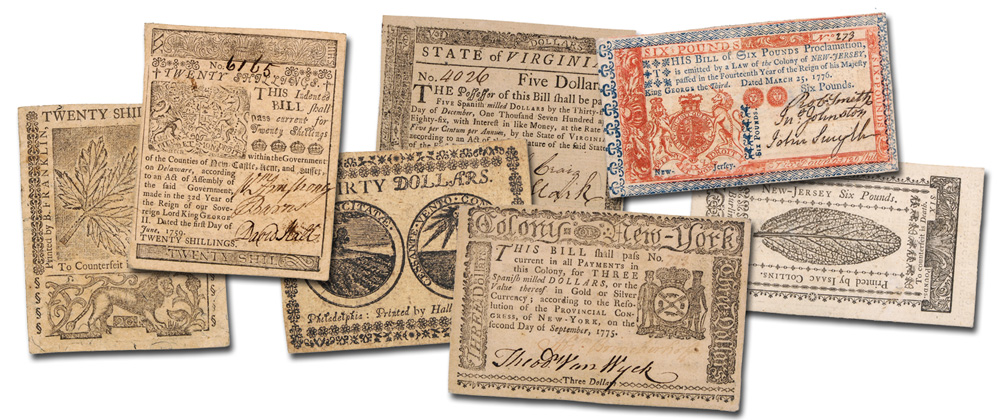
Next followed paper money issued under the auspices of the Continental Congress, with the first issues in 1775 before war was declared with England. The last issues are 1778. These notes were payable in Spanish milled dollars, although the treasury of the United Colonies, later the United States of America, did not have coins to redeem them. Accordingly, the paper money passed from hand to hand, including in payments to Continental soldiers, but was generally not redeemed in hard money. The value depreciated, and by 1790 a Continental Currency note was worth only about 1/40th of face value. That is, $40 worth of Continental Currency could be exchanged for a single silver Spanish milled dollar.
As the fledgling United States government got underway and became organized, what with the Constitution (1787), ratification of statehood by the former colonies and the like, money in circulation consisted entirely of foreign issues. Dominant were the silver and gold coins of Spanish-America produced in mints in Mexico, Peru, Chile, and elsewhere. The largest silver coin was the eight real piece, with fractional pieces or “bits” worth 12-1/2 cents each. The term “two bits” referred to a quarter real and is sometimes heard today as a nickname for a quarter dollar. The smallest coin was the half real or medio at 6-1/4 cents. Gold coins of Spanish-America were headed by the eight escudo piece or doubloon worth about $16. In addition, coins of France, England, Holland, and certain other countries saw service.
As there were literally thousands of different coin designs, dates and varieties, merchants, banks, and others had no way of valuing them by sight. They referred to various exchange tables which gave the equivalent value of a Mexican eight real piece, one made in Colombia, which might have a different content of silver and have a slightly different value, a British shilling and the like. Scales were often used to weigh coins to be sure they were not light.
Under this scenario a new system of currency evolved. State legislatures granted charters to various companies and groups of individuals who desired to enter into the banking business. Such a charter typically stated the amount of capital to be authorized, say $100,000 to be paid in by stockholders. Once this was done, usually specified to be paid in specie (silver and gold coins) the bank could issue paper money against its assets. In time some states permitted issuance beyond the capital. Problems arose at the outset when instead of paying in specie, many if not most bank shares were purchased by giving IOUs. A typical bank had little in the way of silver and gold coins. This system of state-chartered bank notes began in 1782 and continued until 1866.
More about this next week.





